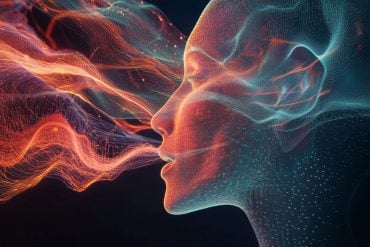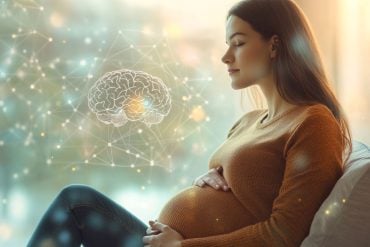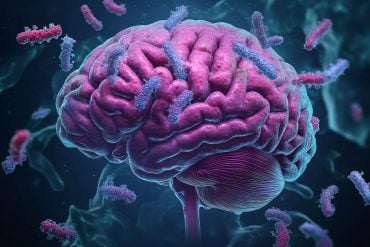Summary: Researchers have identified an early vulnerability biomarker for psychosis.
Source: University of Montreal.
A new study has identified an early vulnerability brain marker for psychosis. A research team led by University of Montreal and Sainte-Justine University Hospital Research Center shows that an exaggerated emotional response from the brain to non-threatening and non-emotional cues predicts the emergence of the first signs of psychotic symptoms in late adolescence. The results of this study were published on March 21 in the American Journal of Psychiatry.
These results are consistent with hypotheses about how psychosis develops. “Delusions and persecution ideas in psychosis appear as a way to make sense of a person’s tendency to attribute salience to neutral and non-salient environmental stimuli,” explained the study’s lead author, Josiane Bourque, a doctoral student at UdeM’s Department of Psychiatry.
This finding could have important clinical repercussion for early identification of at-risk youth. “We were able to detect brain-related abnormalities in teens before psychotic experiences and substance misuse begin to cause significant cognitive impairment and require medical intervention,” said Patricia Conrod, senior author and professor at UdeM’s Department of Psychiatry. “It has yet to be determined whether exaggerated emotional reactivity to non-salient cues can be modified in young adolescents and whether such modifications can benefit at-risk youth,” further explained Conrod. “This is something that we hope to investigate as a follow-up to these findings.”
Brain markers
Dr. Conrod’s team followed more than a thousand European teenagers from age 14 to 16 who were part of the well-known IMAGEN (Imaging Genetics for Mental Disorders) cohort. They measured the teens’ brain activity during completion of various cognitive tasks to evaluate reward sensitivity, inhibitory control and the processing of emotional and non-emotional content. Moreover, the teenagers completed self-reported questionnaires on various psychiatric symptoms at ages 14 and 16. The team first selected a group of youth at 14 years of age who were already reporting occasional psychotic-like experiences and showed that they responded to non-emotional stimuli as though they had strong emotional salience. Then, using a machine learning approach, the researchers tested whether these functional brain characteristics predicted emergence of future psychotic symptoms in a larger group of adolescents at 16 years of age.

Results
At the age of 16, 6% of youth reported having had auditory or visual hallucinations and delusional ideas, and these experiences were significantly predicted by psychotic-like tendencies and brain reactivity to neutral stimuli at 14 years of age, and cannabis use prior to 16 years of age.
New intervention strategies?
“Our research reveals that vulnerability to psychosis can be identified at an early adolescence period”. This is highly encouraging from a prevention perspective. “Since psychosis onset is typically during the beginning of adulthood, early identification of psychosis vulnerability gives clinicians a large window of time in which to intervene on risky behaviours and key etiologic processes”, said Conrod, who is also a researcher at Sainte-Justine University Hospital Research Center. “Our team hopes that this study helps guide the design of new intervention strategies for at-risk youth, before the symptoms become clinically relevant,” she concluded.
Funding: This study was funded by many public organizations. You will find the complete list of the funders at the end of the scientific article. DOI: 10.1176/appi.ajp.2017.16080897
Source: Julie Gazaille – University of Montreal
Image Source: NeuroscienceNews.com image is in the public domain.
Original Research: Abstract for “Functional Neuroimaging Predictors of Self-Reported Psychotic Symptoms in Adolescents” by Josiane Bourque, M.Sc., Philip A. Spechler, B.A., Stéphane Potvin, Ph.D., Robert Whelan, Ph.D., Tobias Banaschewski, M.D., Ph.D., Arun L.W. Bokde, Ph.D., Uli Bromberg, Dipl.-Psych., Christian Büchel, M.D., Erin Burke Quinlan, Ph.D., Sylvane Desrivières, Ph.D., Herta Flor, Ph.D., Vincent Frouin, Ph.D., Penny Gowland, Ph.D., Andreas Heinz, M.D., Ph.D., Bernd Ittermann, Ph.D., Jean-Luc Martinot, M.D., Ph.D., Marie-Laure Paillère-Martinot, M.D., Ph.D., Sarah C. McEwen, Ph.D., Frauke Nees, Ph.D., Dimitri Papadopoulos Orfanos, Ph.D., Tomáš Paus, M.D., Ph.D., Luise Poustka, M.D., Michael N. Smolka, M.D., Nora C. Vetter, Ph.D., Henrik Walter, M.D., Ph.D., Gunter Schumann, M.D., Hugh Garavan, Ph.D., Patricia J. Conrod, Ph.D., the IMAGEN Consortium in American Journal of Psychiatry. Published online March 21 2017 doi:10.1176/appi.ajp.2017.16080897
[cbtabs][cbtab title=”MLA”]University of Montreal “Vulnerability to Psychosis: How to Detect it.” NeuroscienceNews. NeuroscienceNews, 29 March 2017.
<https://neurosciencenews.com/psychosis-vulnerability-6308/>.[/cbtab][cbtab title=”APA”]University of Montreal (2017, March 29). Vulnerability to Psychosis: How to Detect it. NeuroscienceNew. Retrieved March 29, 2017 from https://neurosciencenews.com/psychosis-vulnerability-6308/[/cbtab][cbtab title=”Chicago”]University of Montreal “Vulnerability to Psychosis: How to Detect it.” https://neurosciencenews.com/psychosis-vulnerability-6308/ (accessed March 29, 2017).[/cbtab][/cbtabs]
Abstract
Functional Neuroimaging Predictors of Self-Reported Psychotic Symptoms in Adolescents
Objective:
This study investigated the neural correlates of psychotic-like experiences in youths during tasks involving inhibitory control, reward anticipation, and emotion processing. A secondary aim was to test whether these neurofunctional correlates of risk were predictive of psychotic symptoms 2 years later.
Method:
Functional imaging responses to three paradigms—the stop-signal, monetary incentive delay, and faces tasks—were collected in youths at age 14, as part of the IMAGEN study. At baseline, youths from London and Dublin sites were assessed on psychotic-like experiences, and those reporting significant experiences were compared with matched control subjects. Significant brain activity differences between the groups were used to predict, with cross-validation, the presence of psychotic symptoms in the context of mood fluctuation at age 16, assessed in the full sample. These prediction analyses were conducted with the London-Dublin subsample (N=246) and the full sample (N=1,196).
Results:
Relative to control subjects, youths reporting psychotic-like experiences showed increased hippocampus/amygdala activity during processing of neutral faces and reduced dorsolateral prefrontal activity during failed inhibition. The most prominent regional difference for classifying 16-year-olds with mood fluctuation and psychotic symptoms relative to the control groups (those with mood fluctuations but no psychotic symptoms and those with no mood symptoms) was hyperactivation of the hippocampus/amygdala, when controlling for baseline psychotic-like experiences and cannabis use.
Conclusions:
The results stress the importance of the limbic network’s increased response to neutral facial stimuli as a marker of the extended psychosis phenotype. These findings might help to guide early intervention strategies for at-risk youths.
“Functional Neuroimaging Predictors of Self-Reported Psychotic Symptoms in Adolescents” by Josiane Bourque, M.Sc., Philip A. Spechler, B.A., Stéphane Potvin, Ph.D., Robert Whelan, Ph.D., Tobias Banaschewski, M.D., Ph.D., Arun L.W. Bokde, Ph.D., Uli Bromberg, Dipl.-Psych., Christian Büchel, M.D., Erin Burke Quinlan, Ph.D., Sylvane Desrivières, Ph.D., Herta Flor, Ph.D., Vincent Frouin, Ph.D., Penny Gowland, Ph.D., Andreas Heinz, M.D., Ph.D., Bernd Ittermann, Ph.D., Jean-Luc Martinot, M.D., Ph.D., Marie-Laure Paillère-Martinot, M.D., Ph.D., Sarah C. McEwen, Ph.D., Frauke Nees, Ph.D., Dimitri Papadopoulos Orfanos, Ph.D., Tomáš Paus, M.D., Ph.D., Luise Poustka, M.D., Michael N. Smolka, M.D., Nora C. Vetter, Ph.D., Henrik Walter, M.D., Ph.D., Gunter Schumann, M.D., Hugh Garavan, Ph.D., Patricia J. Conrod, Ph.D., the IMAGEN Consortium in American Journal of Psychiatry. Published online March 21 2017 doi:10.1176/appi.ajp.2017.16080897






